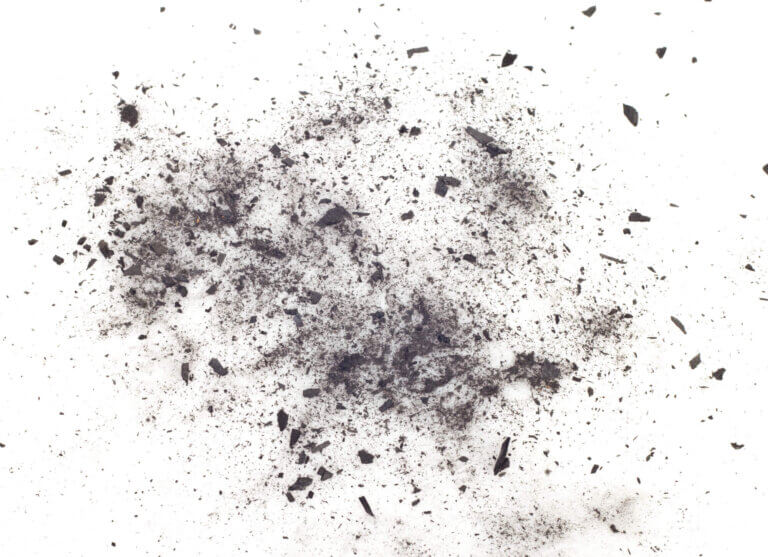Inspection checklists are tools used to organize projects and duties and to verify your most important tasks. They have been designed to reduce errors and ensure consistency and completeness in carrying out an assignment.
As each item on the checklist is ticked off, the person doing the inspection is verifying that each component of the equipment is working correctly. It also help you to know that you meet the industry standards.
Checklists have traditionally only been available on paper, but now you can use the digital ones, where inspections are done directly on mobile devices and the data is being immediately saved and assimilated for easy reporting. By using digital checklists or checklist apps, you can have all your different inspection checklists automatically updated to your database with just few clicks.
The role of inspection checklists
The main purposes of inspection checklists are to outline quality standards and product requirements and provide objective criteria for inspecting products and facilities to ensure they meet customer’s expectations and regulatory standards. Inspection checklists help you to make sure the machinery is working properly, to prevent accidents and minimize downtime.
A good inspection checklist will help you to:
Meet regulatory standards
When it comes to checking the product quality, a checklist is not only helpful for internal QC staff, but also for you or any third-party inspector you hire to inspect on your behalf. Effective quality assurance checklists can ensure your products meet regulatory standards. If a product goes to a different market, the quality control checklist should include a section, which defines the market and regulations or standards the product must meet.
Improve products quality
Doing regular checks, you can improve your processes and deliver high-quality products consistently. Improving quality control is vital for the continued success of any business in manufacturing and production.
Promote workplace safety
Conducting regular inspections can help you to identify and address hazards; provide staff the required training and check that your organization has safety equipment such as fire extinguishers and first aid kits and they need are up to date and fully stocked.
Inspections also provide an opportunity for workers to raise their concerns and address any issues in relation to health and safety. Therefore, as new hazards arise, workers will quickly notice and address them before accidents happen.
Improve preventative maintenance planning
If you can diagnose how often a particular type of equipment needs a certain repair, you can schedule that repair before failure occurs avoiding delays and minimizing downtime.
Improve communication across departments
Inspection checklist can help you to reduce misunderstandings and errors, establish procedure across multiple departments, close the gaps and reduce poor communication.
What makes a good inspection checklist?
Inspection checklists and audits act as foundations for safety programs and help companies gathering the necessary insights to discover potential hazards, equipment malfunctions, improper staff training, or unsafe working conditions, among others. To be more effective, they should have the following characteristics.
Easy to use
It needs to be simple and easy-to-use in the field. The design must be simply, with items in an order that is logical to the way each type of equipment will be inspected.
Specific
If it is too generic, it won’t be effective. A checklist needs to be specific to the type of equipment that need to be checked.
Clear
Your inspection checklist has to be written in a clear format because you are not the only one using this tool.
Comprehensive
Checklists should be comprehensive and have to include all the necessary details for every individual asset.
Steps to build your own inspection checklists
The following steps will help you with the process of creating your inspection checklist.
Analyze what can go wrong
Firstly, you need to think about the different aspects and elements that could go wrong with your product during the manufacturing process. This step will help you to come up with a list of specific potential defects.
Discuss risks and concerns unique to the project
Have meetings with your team or subcontractors to discuss issues unique to the job as specific checkpoints reinforces their importance of having good knowledge of the different processes.
Classify potential issues
Create a list of potential defects and divide them into different categories: major, minor, and critical problems.
Start with a basic checklist
Get a basic checklist to each meeting. You can pick up one you have used before or a template from a library of inspection checklists. They should include sections such as:
-Checkpoints to heighten awareness of critical details.
-Checkpoints to document compliance with project-specific requirements.
-Recording of important measurements.
-Scores for quality, safety, and timeliness.
-Required pictures of inspected work.
-Signatures.
How to create effective inspection checklists
From the starting point, you can adapt and modify your checklist to both the job and the subcontractors doing the work. Each subtrade should get its own set of checklists that focuses only on the most specific work.
Start with inspection checklist templates
Begin with checklist templates that you can find online. It is easier to modify an existing checklist than to start from scratch. Moreover, reviewing these templates you might find checkpoints you might have forgotten otherwise. When working from a checklist template, review the checkpoints and remove those that do not apply to your industry or organization.
Customize checklists for your project
Add checkpoints based on problems you or your workers frequently find and modify checkpoints based on your own experience. Your business is unique and you are most likely to have issues that other businesses might not come across. It might be because you do things differently or maybe you have special requirements for specific tasks. For this reason, your checklists need to be specific to your project or scope of work.
Include appropriate checkpoints
Your checkpoints should be items that typically go wrong in the field. Anything that has been a recurring problem in the past should be included as well as the daily issues and critical items that come up in the project progress meetings.
Prepare project-specific checklists “just-in-time”
Do not try to prepare every checklist you think you might need before your project begins. Get ready only the checklists you will need based on your project schedule and inspection plans so you can add input from inspectors, clients, and your own observations. That way, you will have the best possible checklist when the inspection starts.
Keep checklists short and focused
As long as you have checklists established around issues that come up commonly, you do not need to have an item listed for every detail. Inspection checklists should have 10 to 20 checkpoints so the inspector can focus on the critical items.
Organize checklists the way you will inspect
If you will inspect your project by room or area, that is how you should organize your checklists. This will ease the inspector’s job and will reduce waste of time from moving back and forth between rooms. If some items you inspect are repeated in several areas, your checkpoints should also be repeated.
Look through and review your checklists continuously
You should analyze your checklists on a regular basis and remove checkpoints that are rarely used. On the other hand, you should add checkpoints when deficiencies unrelated to existing ones come out. If you spend time now, refining your checklist means you will spend less time dealing with quality issues on every inspection in the future.
Benefits of using inspection checklists apps
Mobile applications have become more and more important in our daily lives and many businesses have realized the benefits that mobile apps can help to achieve. Replacing paper based site inspection checklists with digital forms will help optimize internal business processes. The digitization of site inspection checklists has many advantages:
Simplify your processes
An app allows you to create professional checklists with a real time task tracking system. All the data is collected automatically through the app, by simple using a smartphone and tablet.
Allows rich data capture
The inspector can add data like photos, videos, voice recordings, GPS location, etc.
Allows offline data capture
Many apps can be used offline, which is a handy feature when our research involves data collection at remote locations where internet connectivity is low.
DataScope is the ideal tool to perform inspections or audits in a simple and efficient manner. By using the DataScope app, your company’s supervisors or field inspectors can visit different locations and fill out custom forms using their mobile phones or tablets. In case there is no internet connection available, all data is still saved and synchronized later, without losing any recorded information. DataScope allows you to create your own Inspection Checklist App. It works in Android and iOS and allow you to work offline, collect pictures, signatures and barcode.
DataScope is a platform which allows various industries to streamline, organize and evaluate the work of their field staffs thanks to online forms which provide real time indicators 100% adaptable to any field.








